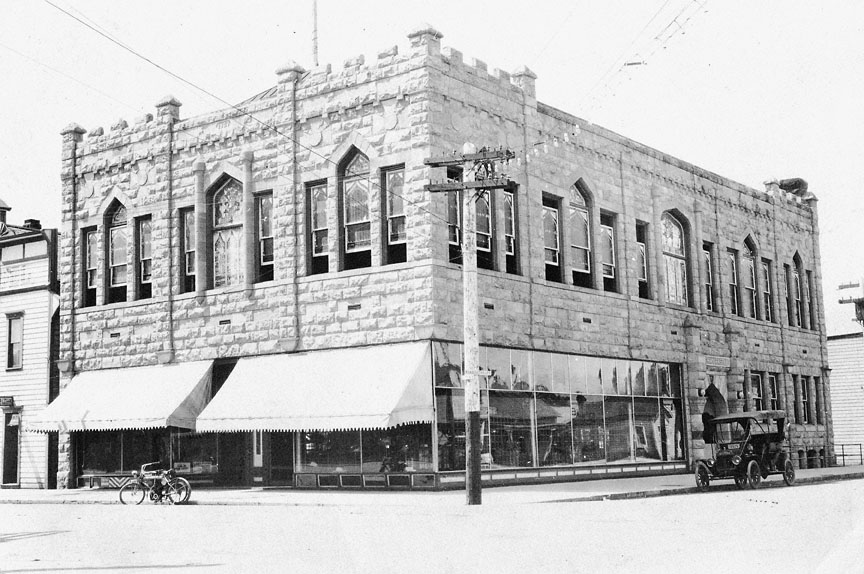- Catalog No. —
- OrHi 105140
- Date —
- circa 1915
- Era —
- 1881-1920 (Industrialization and Progressive Reform)
- Themes —
- Geography and Places
- Credits —
- Oregon Historical Society
- Regions —
- Northeast
- Author —
- Unknown
Knights of Pythias Castle, Baker City
This photograph shows the Baker City headquarters of a fraternal order known as the Knights of Pythias, probably about 1915.
The Fraternal Order of Knights Pythias is an organization of men (women were organized in the allied Pythian Sisters organization), “dedicated to universal peace.” The ideal of brotherhood was inspired by the play Damon and Pythias (1826) by the Irish writer John Banim, and this in turn was linked to ideals of knighthood to create the organization’s name.
The Pythian order was a popular society on the West Coast by the end of the nineteenth century. Baker City hosted three lodges: Gauntlet Lodge No. 8; Oregon Company No. 6, Uniform Rank; and Fidelity Temple No. 30 of the Pythian Sisters. In about 1907, the Baker City Pythians constructed this stone headquarters building, called the Pythian Castle, which had retail space on the first floor and lodge meeting rooms above. The association of knighthood with castles was the inspiration for its medieval appearance. Stylistically, it is an eclectic application to a standard commercial block of a few “medieval” features, such as pointed-arch windows, stained glass, and a suggestion of crenellated towers at the corners. Baker City was close to supplies of good-quality building stone, and many stone buildings were erected there between 1880 and 1920, including the Baker County courthouse, a cathedral, schools, business blocks, and residences.
Fraternal and sororial lodges—brotherhoods and sisterhoods—included such groups as the Independent Order of Odd Fellows (IOOF) and the Rebekahs, the Elks, the Eagles, the Woodmen of the World (WOW), the Knights of Columbus, and others. Some had religious affiliations; others were dedicated to charitable or social purposes. Their importance has declined since World War II, but many of their often architecturally distinctive halls and lodges have survived and continue to be used for other purposes. They can often be identified by symbols or architectural references, such as three linked rings and the letters IOOF or the compass and square on Masonic buildings. Lodges of the various Masonic orders reflect connections between, for example, the Shriners—officially, the Ancient Arabic Order Nobles of the Mystic Shrine—and Islamic buildings, and the Knights Templar and medieval European buildings. Lodge buildings have been a distinctive element in Oregon towns and cities since the 1850s.
Related Historical References:
National Register of Historic Places: Oregon—Baker—Baker Historic District (District - #78002277). Also known as Baker City Historic District. Irregular pattern along Main St. from Madison to Estes Sts., Baker City.
Written by Richard Engeman, © Oregon Historical Society, 2005.
